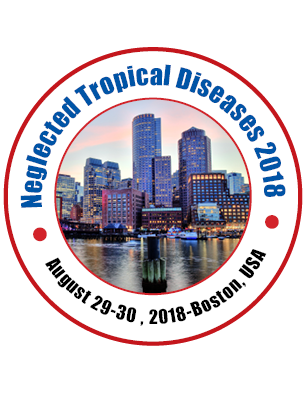Mebrahtu G Tedla
The University of Melbourne, Australia
Title: Recognition of Schistosoma mansoni egg-expressed ovalbumin by OT-II T cell receptor transgenic T cells
Biography
Biography: Mebrahtu G Tedla
Abstract
Human schistosomiasis is one of the neglected tropical parasitic diseases affecting nearly 200 million people worldwide, which is endemic in more than 70 countries with five known species causing the disease. Schistosoma mansoni is one of the common species existing in tropical countries. It is known to modulate the host’s immune system with the help of soluble egg proteins such as omega-1 and kappa-5, but most of these mechanisms have only been unraveled in vitro. Going towards, developing effective tools for the study of how S. mansoni influences T cells, we have developed S. mansoni eggs expressing chicken egg ovalbumin (OVA), using a lentiviral transduction system. Indeed, OVA is a “neutral antigen” and can be used to activate T cell from T cell receptor transgenic mice. The expression was confirmed by real-time RT-PCR of OVA-specific mRNA and western blotting using polyclonal antibodies specific for OVA. T cells from OT-II transgenic mice, mice expressing a T cell receptor specific for the OVA323-339 peptide, recognized the OVA expressed by transduced S. mansoni eggs. Using flow cytometry on CFSE-labelled OT-II splenocytes, we demonstrated that OVA-transduced eggs elicit higher OT-II T cell proliferative responses than untransduced eggs. The OT-II T cells also produced TNF and IFN-γ following exposure to OVA-transduced eggs. In addition, moderate amounts of IL-6 and IL-17A were also detected. In contrast, no IL-10, IL-4, and IL-2 were detected in cultures, whether the cells were stimulated with transduced or untransduced eggs. Thus, the cytokine signatures showed the transfected eggs induced a mixed type of Th1 and Th17 responses, with a small amount of IL-6. This study was further extended to analyze the degree of OVA detection by OT-II T cells in vivo following adoptive transfer and showed a considerable proliferation of T cells by OVA-transduced eggs comparing to untransduced eggs. Hence, the present finding signifies a detail investigation of the mechanism of parasite manipulation in vivo.
Human schistosomiasis is one of the neglected tropical parasitic diseases affecting nearly 200 million people worldwide, which is endemic in more than 70 countries with five known species causing the disease. Schistosoma mansoni is one of the common species existing in tropical countries. It is known to modulate the host’s immune system with the help of soluble egg proteins such as omega-1 and kappa-5, but most of these mechanisms have only been unraveled in vitro. Going towards, developing effective tools for the study of how S. mansoni influences T cells, we have developed S. mansoni eggs expressing chicken egg ovalbumin (OVA), using a lentiviral transduction system. Indeed, OVA is a “neutral antigen” and can be used to activate T cell from T cell receptor transgenic mice. The expression was confirmed by real-time RT-PCR of OVA-specific mRNA and western blotting using polyclonal antibodies specific for OVA. T cells from OT-II transgenic mice, mice expressing a T cell receptor specific for the OVA323-339 peptide, recognized the OVA expressed by transduced S. mansoni eggs. Using flow cytometry on CFSE-labelled OT-II splenocytes, we demonstrated that OVA-transduced eggs elicit higher OT-II T cell proliferative responses than untransduced eggs. The OT-II T cells also produced TNF and IFN-γ following exposure to OVA-transduced eggs. In addition, moderate amounts of IL-6 and IL-17A were also detected. In contrast, no IL-10, IL-4, and IL-2 were detected in cultures, whether the cells were stimulated with transduced or untransduced eggs. Thus, the cytokine signatures showed the transfected eggs induced a mixed type of Th1 and Th17 responses, with a small amount of IL-6. This study was further extended to analyze the degree of OVA detection by OT-II T cells in vivo following adoptive transfer and showed a considerable proliferation of T cells by OVA-transduced eggs comparing to untransduced eggs. Hence, the present finding signifies a detail investigation of the mechanism of parasite manipulation in vivo.

